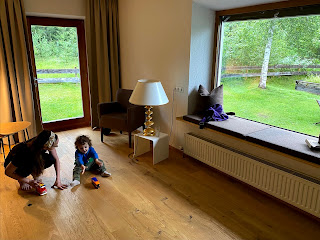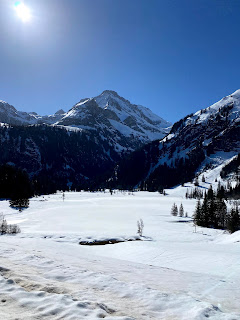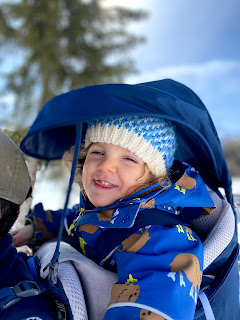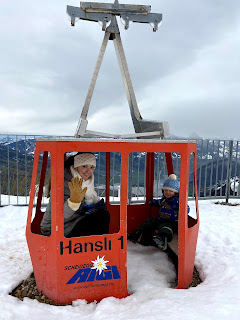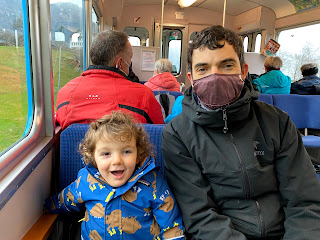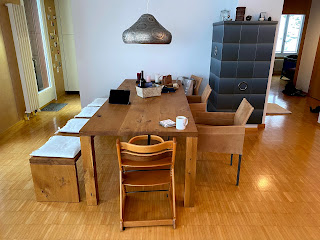On a wet summer's weekend in Tirol, when feisty storms brew in the mountains and sweep up Alpine passes, a 1930s chalet in Seefeld proves to be the perfect hideaway.
The sitting room in our 1930s chalet for the weekend has a broad low-slung window that is like a cinema screen showcasing the natural world. Through it, we watch as seething storms brew in the mountains, their steely weight throbbing beyond the languid and ghostly silver birches that surround the chalet. There are stumpier fruit bushes dotted around the patio, and as the wind ripples through, it tosses the leaves at random, generating a disharmonious shiver. When the rain comes, the view looks like static on a screen. Although we're on the edge of central Seefeld in Tirol, and surrounded by other properties, you wouldn't know they were there.
We spent the morning walking from the lively streets of the centre to the Wildmoosalm. We swapped cobbles for woodland scattered with wildflowers. Albie completed a kids' Olympia Parcours hidden in the woods and ran a lot of the way to the alm. "Gimpft, getestet, geduscht?" (Vaccinated, tested, showered?) joked the waiter when we arrived. He looked fresh from the set of the Austrian TV show 'Die Piefke Saga', with his leather trousers, sunbeaten skin and mop of straight black hair. We smiled even more when he presented our Apfelstrudel - delicious layers of buttery pastry struggling to contain a gooey mush of punchy spiced apple.
When we returned to central Seefeld, it was abuzz: the streets lined with restaurants spilling onto sun-drenched terraces that themselves overspilled. Seefeld embodies the charming Tirolean town image. Its russet-spired church pokes up from a huddle of white chalets with sloping roofs and window boxes, and all around, these low-slung hulks of mountains part to make way for narrow Alpine passes. In the fissures between the buildings are pretty streets with colourful flowerbeds, designer boutiques, and mineral and precious stone bazaars.
It's a picturesque 30-minute train ride to Innsbruck, the capital of the Tyrol. The day we visited, it was heaving, despite persistent rain that spilled from the defiant clouds clinging to the Nordkette mountain chain and Patscherkofel. The River Inn was swollen, rushing and pale khaki, its banks like Elizabethan ruffs with trees in full foliage. We sat next to a window in Cafe Katzung opposite the Golden Roof - the luck of timing; it was the one free table when we arrived and soon afterwards, a queue had formed out of the door. We watched the rain spill onto the old town while drinking tea made with herbs from the region and devouring Katzungtorte - light, moist and sweet hazelnut sponge with orange and cacao. I remember enjoying it when I lived in Innsbruck more than a decade ago. It's reassuring to know that no matter how much changes in life, some things stay the same.
I experienced a similar feeling when our train arrived back at Seefeld station. It was a journey I made many times as an Erasmus student in Innsbruck, usually to come cross-country skiing on the plateau here. Today it's summer, but it doesn't feel like summer, and I'm happy to get back to our chalet. Inside, the floorboards creak as if the building is speaking to you. There's something homely about that. I like too the natural tones of taupe and grey with splashes of pale pink and sheepswool cushions, with oak flooring and Scandi-style furniture. In the garden there's a trampoline, where Albie will bounce when the rain eases, his little shape flying up and down against the backdrop of the soaring wave shape that is Seefeld's iconic mountain, Hohe Munde.



